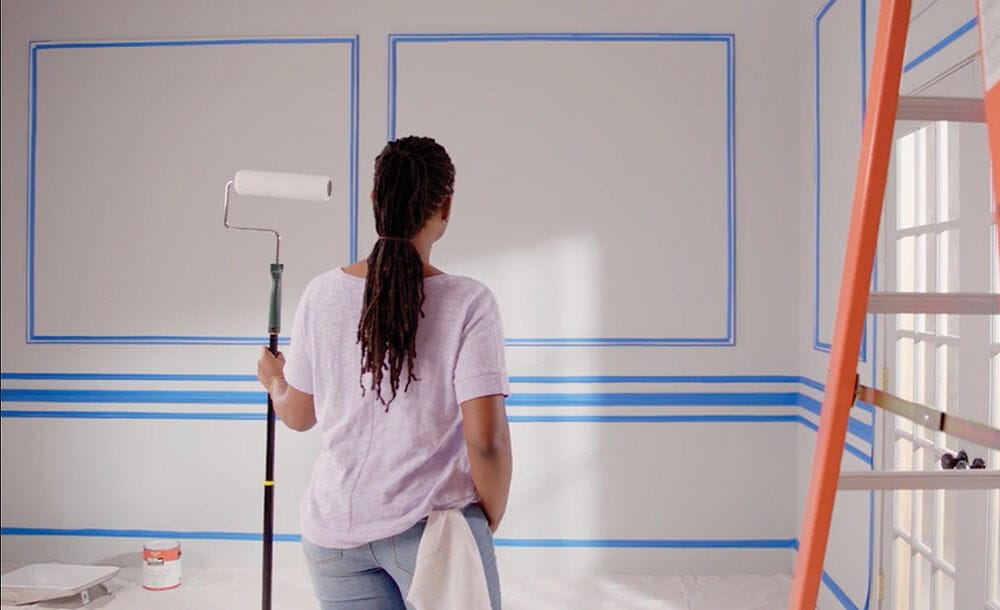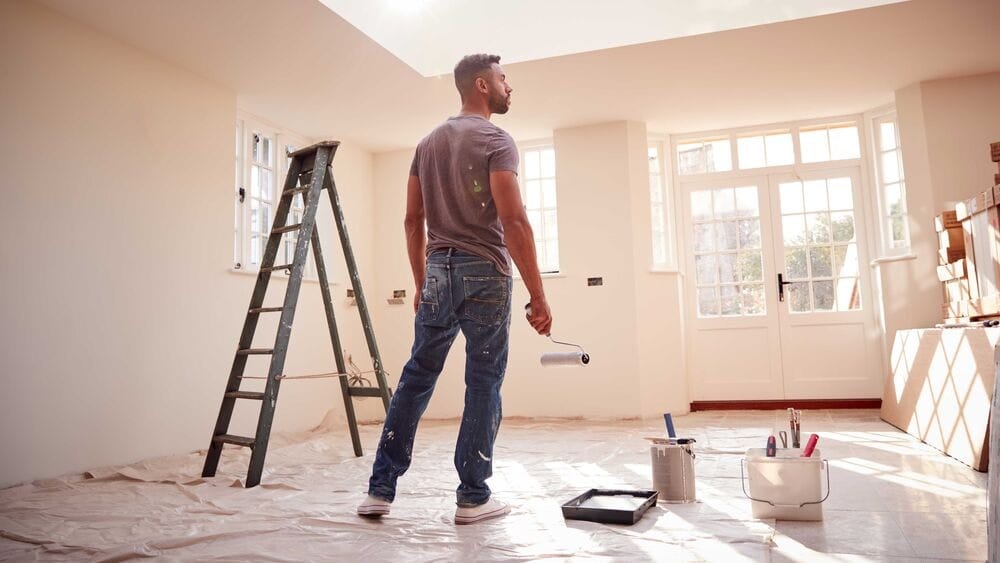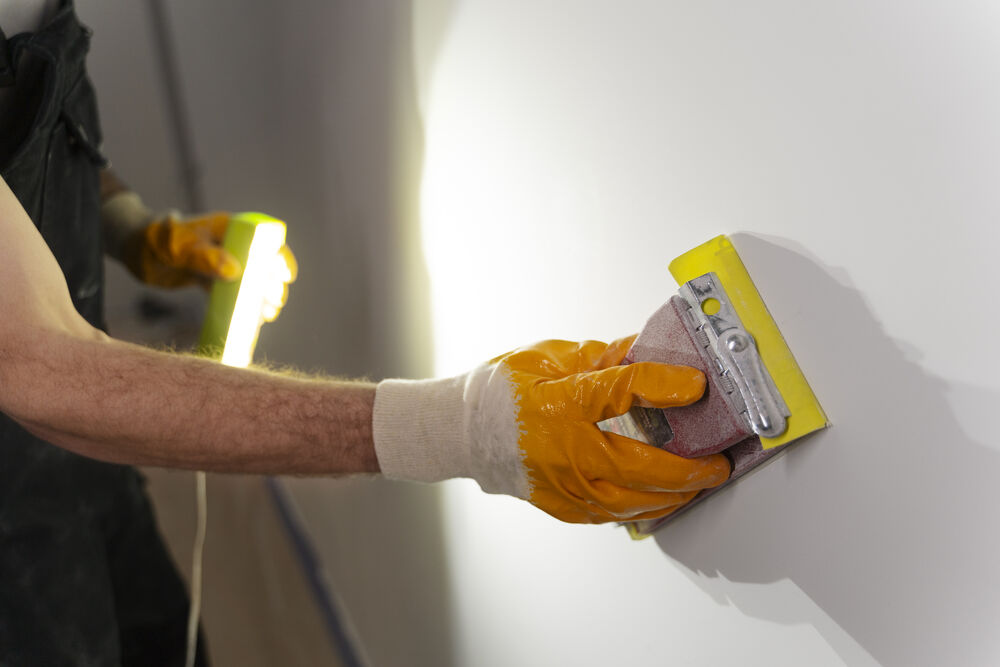- Free Estimates

Proper wall preparation is the foundation of a flawless, lasting paint job. Skipping even one step often leads to uneven finishes, peeling, or a dull, patchy appearance over time. In fact, studies show that 80% of people attempting DIY projects make mistakes, and 45% admit to completely ruining a project. Fortunately, with the right approach, prepping a wall becomes a simple, manageable process that sets every painting project on the right track.
Here are the essential steps to clean and prime walls before painting.
Key Takeaways✔ Gather all essential tools and materials ahead of time to ensure a smooth and uninterrupted wall preparation process. ✔ Protect floors, furniture, and fixtures by moving items away and covering surfaces with drop cloths and plastic sheets. ✔ Wipe down walls thoroughly to remove dust, dirt, and grease for better paint adhesion and a cleaner finish. ✔ Fill all holes, cracks, and dents with spackle or filler to create a smooth and even painting surface. ✔ Lightly sand repaired areas and rough spots to blend surfaces and remove imperfections before painting. ✔ Apply painter’s tape carefully around edges, trim, and fixtures to achieve clean, crisp paint lines. ✔ Use primer on repaired areas, stained surfaces, or dark walls to create an even base for the topcoat. |

Preparation is the foundation of a perfect paint job. Before beginning, it is important to gather all essential tools and supplies. Having everything within reach saves time, reduces stress, and ensures a smooth workflow.
A well-organized setup with the right tools ensures the best results. This part of the wall preparation guide for painting focuses on assembling high-quality materials before any actual work starts.
Preparing the space before painting ensures a clean, efficient, and professional result. A key part of prepping the wall for paint is making sure all surfaces and belongings are fully protected. Following a detailed wall preparation guide for painting not only saves time but also prevents unnecessary damage.
Before starting the wall preparation, it is crucial to clear as much of the room as possible.
Keeping floors and furniture protected is a basic step in professional wall prepping techniques.
Fixtures and trims often get overlooked but are just as important in the steps to clean and prime walls before painting.
Cleaning the walls is one of the most important steps in the wall preparation guide for painting. A clean surface ensures that paint adheres properly, creating a smooth and professional finish. Skipping this step can lead to peeling, uneven texture, and a shorter paint lifespan.
Before moving forward with sanding or priming, it is crucial to thoroughly clean the walls. Follow these steps to clean and prime walls before painting:
Choosing the best tools when prepping wall for paint can make the cleaning process faster and more effective. Professionals in Glastonbury, CT, recommend having a few key items ready before starting:
A strong foundation begins with addressing every flaw on the wall. Properly fixing imperfections ensures a smooth surface and professional finish once the paint is applied.
Before beginning repairs, it is important to inspect the wall carefully for all visible and hidden issues. Small defects, if ignored, can ruin the final look of the painted surface.
Selecting the correct material is key to seamless wall repair. Using the best tools for wall preparation helps make this step efficient and ensures a solid finish.
Proper application ensures that the repair blends into the surrounding wall without creating bumps or ridges. Following professional wall prepping techniques here is essential.
Patience is critical during the drying stage. Rushing this process can cause uneven surfaces once the paint is applied.

Proper sanding is one of the most important steps when prepping wall for paint. It ensures a smooth, even surface, allowing paint to adhere better and deliver a flawless finish. Skipping or rushing this step can leave imperfections that show through the final coat.
Selecting the right equipment is key when following professional wall prepping techniques. Using the proper tools makes the job easier and more effective.
Following these easy steps ensures a clean, even wall, laying a strong foundation for the next stages in the steps to clean and prime walls before painting.
After sanding, it is critical to remove all sanding dust to avoid trapping debris under the paint. Residual dust can cause paint imperfections like bumps or an uneven texture.
Taping and protecting edges is a critical part of prepping a wall for paint. It ensures neat, professional-looking results without messy mistakes. Taking a few extra minutes to tape properly can make a big difference in the final look.
Secure, accurate taping prevents paint from bleeding onto surfaces like trim, windows, or ceilings. It also saves time by reducing the need for touch-ups later.
Using the right tools is part of professional wall prepping techniques. The best tape can handle sharp lines without damaging surfaces when removed.
Following the correct method ensures the tape performs as intended and helps achieve a flawless finish.
Proper wall priming is a critical part of prepping wall for paint. It helps create a clean, even surface and ensures that paint adheres smoothly and lasts longer. Skipping this step can lead to blotchy finishes, uneven color, and peeling over time.
Primer is not always needed, but there are specific cases where it becomes essential. As part of any wall preparation guide for painting, understanding when to prime can make a major difference in the final result.
Acting as a thicker, protective base layer, primer shields surfaces from moisture, pollutants, and damage. With corrosion-inhibiting properties, it improves paint adhesion and helps create a longer-lasting, more durable finish.
Mildew or mold presence on walls is something that typically needs attention before painting. These conditions can impact both the appearance and integrity of a new paint job. Preparing a wall affected by mold usually focuses on creating a clean, dry surface. Environmental factors often play a role in how mildew and mold develop.
Different surfaces such as drywall, plaster, wood, and masonry can require varied attention before painting. The materials may have distinct absorption rates, textures, or existing coatings that affect preparation needs. Environmental exposure and previous treatments are additional factors that can influence surface conditions. Some surfaces might present unique challenges depending on their history.
Existing layers of paint can influence how a wall must be prepared for new applications. Older paint may peel, crack, or discolor, impacting the readiness of the surface. The condition of the existing coat often guides decisions during the preparation stage. Surfaces with multiple paint layers might present different challenges than newly painted areas.
The age of a building can influence the condition of its walls and the amount of preparation needed. Older structures may have surfaces with accumulated wear, previous paint layers, or structural shifts. Materials used in construction might also differ based on the era, affecting how walls behave under new paint. Issues like plaster degradation or outdated coatings can be factors.
Prepping high walls and ceilings can introduce logistical and physical challenges. Accessing elevated surfaces may require specialized equipment or additional safety measures. These areas can also accumulate dust, cobwebs, or moisture-related damage over time. Height can make the identification and correction of imperfections more difficult.
Getting walls ready for a flawless finish is simple with help from Glastonbury Professionals House Painters. Every step, from repairs to priming, is handled with expert care and the best tools available. Homes across Glastonbury, CT, trust our team with the best tools for wall preparation to deliver smooth, lasting results that stand out.
Reach out to Glastonbury Professionals House Painters today to set up a free consultation!